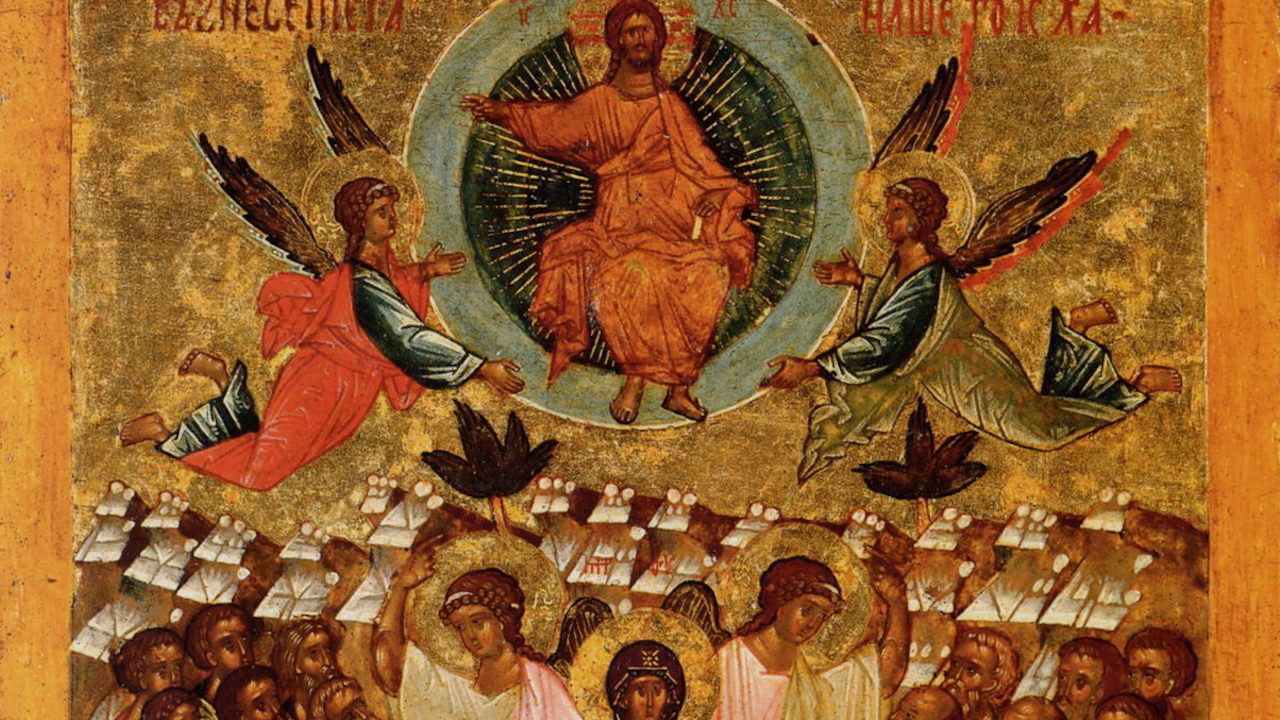Do you see that any of us who wishes will share in the Lord’s resurrection, and will be an heir of God and joint-heir with Christ (cf. Rom. 8:17)? That is why we joyfully celebrate the resurrection of our human nature, its exaltation and sitting down on high, and also the starting point of the resurrection and ascension of each of the faithful, publicly proclaiming the words of today’s Gospel reading, that when the Lord had risen, He stood in the midst of His disciples (Lk. 24:36-53).
Why did He stand in their midst and afterwards accompany them? “And He led them out,” it says, “as far as to Bethany, and He lifted up His hands, and blessed them” (Lk. 24:50). He did it to show that He was completely whole and unharmed, to prove that His feet, that had endured being pierced by nails, were sound and trod firmly, that His hands, that had been likewise nailed to the Cross, and His side, that had been pierced by the spear, were whole, even though they bored the signs of the wounds as confirmation of the saving passion. I think that the words, “He stood in the midst of His disciples” (cf. Lk. 24:36), also imply that their faith in Him was strengthened by the way He appeared and blessed them. He did not just stand among them all, but stood in the midst of each one’s heart and it was strengthened through faith, so that the psalmist’s words, “God is in the midst of her; she shall not be moved” (Ps. 46:5), can be applied to each of their hearts. For from then on the Lord’s apostles became steadfast and immovable.
So He stood in the midst of them and said: “Peace be unto you” (Lk. 24:36), that sweet, penetrating, and familiar salutation. There are two kinds of peace: peace with God, which is above all the fruits of godliness, and peace with one another, which arises naturally from the words of the Gospel. At that time the Lord gave them both by His one greeting. When He first sent them out He told them, “Into whatsoever house ye enter, first say, ‘Peace be to this house’” (Lk. 10:5). Now He did exactly that, and entering the house where they were gathered, He straightway gave them peace. He saw that they were frightened and troubled by the unexpected and strange sight—“and supposed,” it says, “that they had seen a spirit” (Lk. 24:37), that is, that the person they saw was a phantom. So once more He told them what was happening in their own hearts, revealed that He was the one to whom they had said before the passion and resurrection, “Now are we sure that Thou knowest all things, and needest not that any man should ask Thee” (Jn. 16:30), and proposed that they reassure themselves by examining and touching Him. Once He saw that they had accepted the truth, He gave further confirmation for them to scrutinize by taking food while they watched, as well as sharing fellowship and peace with them. “And while they yet believed not and wondered,” certainly not because they dissented, but for joy, “He said unto them, ‘Have ye any meat?’ And they gave Him a piece of a broiled fish, and of an honeycomb. And He took it, and did eat it before them” (Lk. 24:41-43).
~St Gregory Palamas, Homily 21 on the Ascension









